NASA’s two advanced X-ray space telescopes are highlighting an astonishing image just in time for Halloween: the “bones” of a hand-shaped structure reaching out in the vast expanse of space. This celestial formation originates from the remnants of a collapsed star, spewing out plumes of energized matter and antimatter.
The findings are likened by NASA researchers to the very origins of X-rays, which date back to 1895 and German physicist William Röntgen. While experimenting with cathode rays using a Crookes tube (an early experimental electrical discharge tube), he noticed a fluorescent glow in a nearby chemically coated screen. The tube was surrounded by black cardboard, which should have prevented any light from escaping, yet the screen still glowed. Röntgen soon discovered that this new type of ray could penetrate through most substances, including human tissue, but left bones and metals visible. Recognizing the potential of his discovery, he took an X-ray photograph (or radiograph) of his wife Anna’s hand, clearly showing her bones and her wedding ring. Because he didn’t know the nature of these rays, he named them “X-rays,” with “X” representing the unknown.
So where did this cosmic “hand” come from?
About 1,500 years ago, a colossal star in our galaxy consumed all its nuclear fuel. This event led the star to collapse into itself, resulting in the formation of a neutron star. These types of stars, especially the rotating ones with powerful magnetic fields known as pulsars, are akin to cosmic laboratories. They exhibit extreme physical phenomena that can’t be duplicated here on Earth.
One of the most intriguing manifestations of young pulsars is the “pulsar wind nebula,” a spectacle formed by the rapid jets of matter and antimatter propelled away from the pulsar.
Almost 20 years ago, NASA’s Chandra X-ray Observatory first spotted the pulsar PSR B1509-58. It revealed a pulsar wind nebula looking strikingly like a human hand, which was aptly named MSH 15-52. Situated 16,000 light-years from our planet, the pulsar can be found at the “palm” of this cosmic hand.
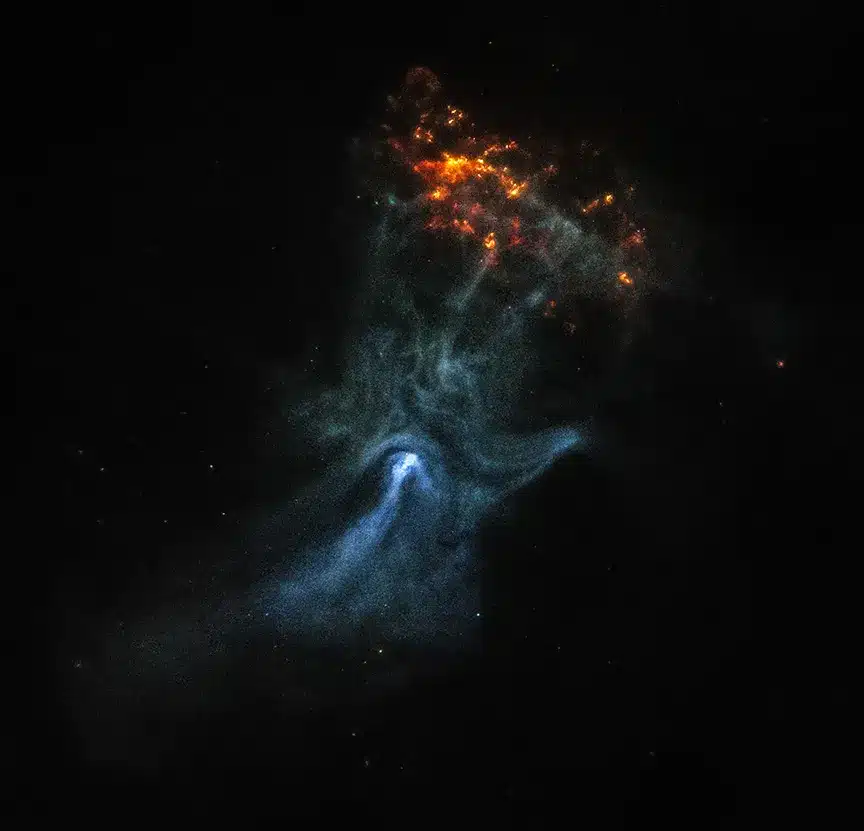
NASA’s newest X-ray telescope, the Imaging X-ray Polarimetry Explorer (IXPE), recently spent 17 days observing this celestial marvel. “The IXPE data gives us the first map of the magnetic field in the ‘hand,'” says Roger Romani of Stanford University, who spearheaded the research, in a statement. “The charged particles producing the X-rays travel along the magnetic field, determining the basic shape of the nebula, much like bones shape our hand.”
This latest data from IXPE shed light on the phenomenon of X-ray polarization. This process provides details about the orientation of X-rays, which is influenced by the magnetic field of the source. In numerous areas of MSH 15-52, the polarization is astoundingly high, suggesting a very straight and steady magnetic field. This means there’s minimal turbulence in these parts of the pulsar wind nebula.
Josephine Wong, a co-author from Stanford, drew a parallel to medical science after the findings. “We’re all familiar with X-rays as a diagnostic medical tool for humans. Here we’re using X-rays in a different way, but they are again revealing information that is otherwise hidden from us,” she says.
One standout feature of MSH 15-52 is a radiant X-ray jet stretching from the pulsar to the “wrist” of the hand-shaped structure. The IXPE data exposed the intricacies of this jet. At its inception, the polarization is minimal, indicating a turbulent area with entangled magnetic fields. However, as you move further along the jet, the magnetic field lines straighten, leading to increased polarization.
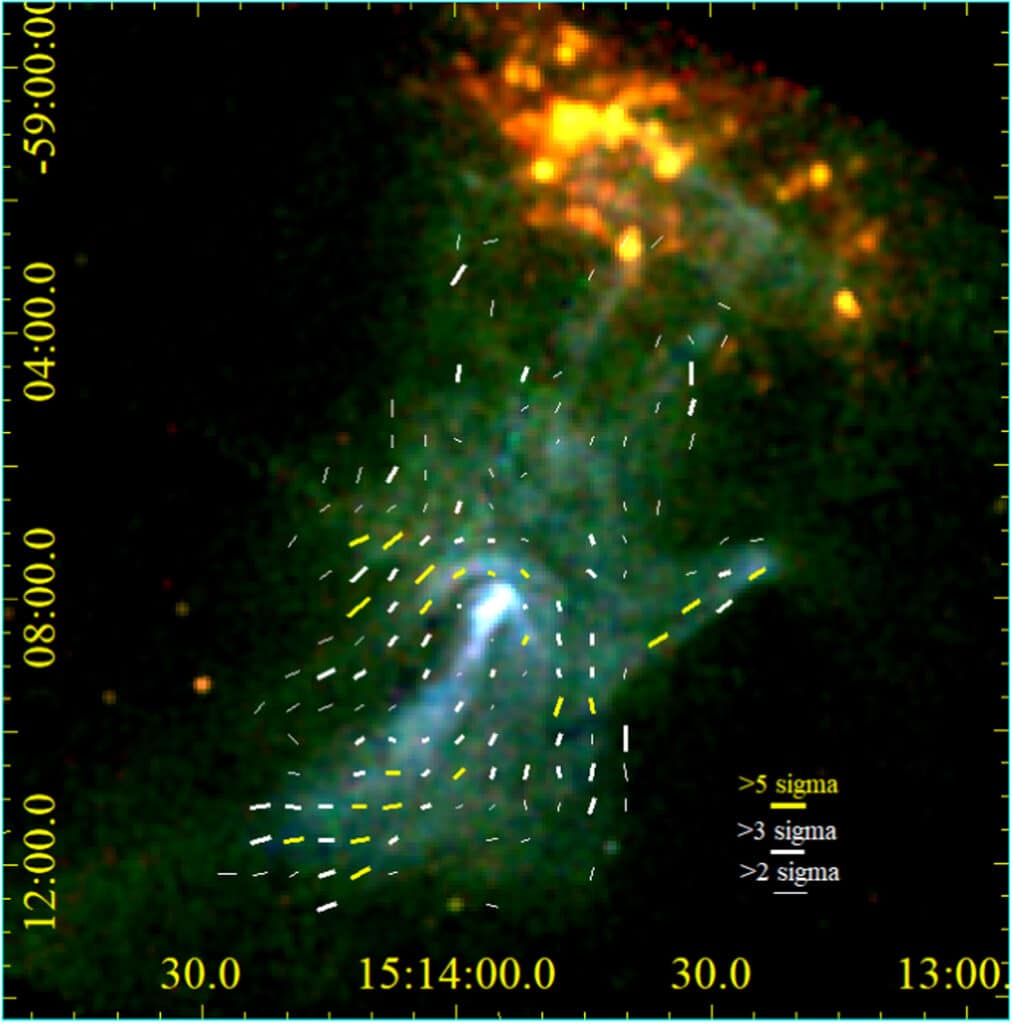
These observations suggest that particles receive an energy boost in the tumultuous regions near the pulsar (located at the palm’s base) and then flow to areas where the magnetic field is consistent, such as the wrist and fingers.
“We’ve uncovered the life history of super energetic matter and antimatter particles around the pulsar,” says Niccolò Di Lalla, another co-author from Stanford. “This teaches us about how pulsars can act as particle accelerators.”
Furthermore, IXPE has identified similar magnetic patterns in other pulsar wind nebulae, hinting at a commonality among these cosmic entities.
The findings are now available in The Astrophysical Journal.
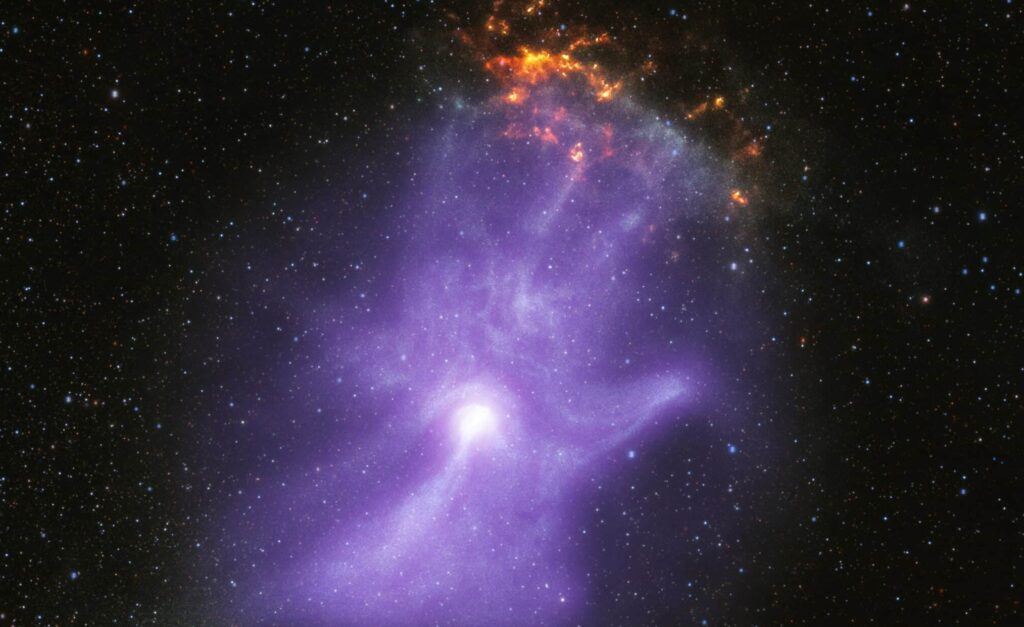



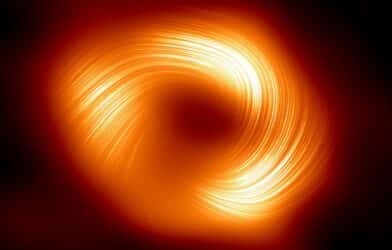
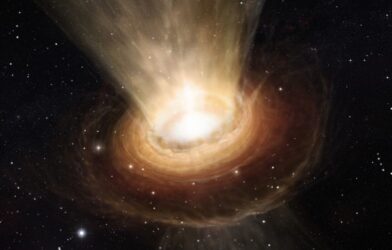

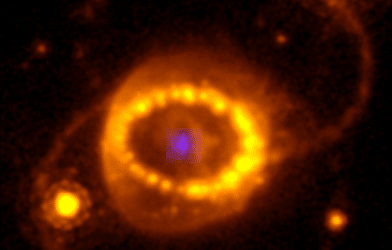





Thanos is preparing to snap his gauntlet shrouded fingers…
Star Trek gets it right again.
!6,000 light years away from earth? and people really think they can see that far? light travels at around 186,000 miles per second, do the math for 16,000 light years…its ridiculous, more NASA BS to get billions of our tax dollars.
My dude… we arent seeing it 16000 miles away… it is coming to us from that far. The only reason we are able to see is because light enters our eyes. Color exists because things that have color absorb all the light that makes a color except the color we see. White substances reflect all light. Red substances reflect only red and absorb all others etc etc. And the light in question is so bright where it’s at, that it is able to be dimly seen 16000 light years away. The sun is 8 minutes ahead of where we see it for example. For all we know, that ghost hand is looooong gone and we are seeing its “after image” if you will.
Yes, Connor, 16,000 light years means it took 16,000 years to get here. Are one of the soft-heads pretending that the Earth is 6,000 years old?
I’m one of those “soft-heads”.
What really takes a soft-head, though, is to assume that the speed of light has been the same since the beginning of time (6000 years or 13 billion years, either way), and then base all scientific “facts” on that grand assumption.
There’s tremendous evidence that even light is subject to entropy (as everything else is) and has been slowing over time. Therefore, if this is at all possible, that light could be slowing, one could back calculate when the speed of light approached infinity to get a much more practical estimation of the age of the universe. In fact, there are those that have already done this, as much as is possible.
The problem now is that we measure the speed of light with radio decay (atomic clocks), which itself is based on the speed of light (E=MC^2), and this may cause further confusion. This assumes, for no apparent reason, that “atomic time” is equal to “dynamic time” (or time as we physically perceive it).
So, so many assumptions…
Unfortunately all this goes against the religion of science and violates their manmade sacraments.
Poor, poor Conner. Are you really this dense?
You are not very bright.
Are you trolling lol. The math for 16k light years is 16,000 years. A light particle (ghasp) or wave travels one light year in one year. 16k years is nothing for the universe and this hand of some lost god is actually very close. Our galaxy is about 100k lightyears across in total.
Uh…you can see the Andromeda galaxy with the naked eye. It’s 2.2 million light years away. You don’t “see” that far. The light comes to you. It just takes 16,000 years to get here.
You nailed it!!
Light travels 5.88 trillion miles in 1 year, relatively speaking. You do the math
If indeed this pulsar is 16,000 light-years from Earth, and the star that created it collapsed 1,500 years ago, then this phenomena would not be detectable for at least another 14,500 years into the future. It would be a good idea if scientific data were fact-checked before publication.
Good Point!
Does look a lot like a Hamsa hand but I don’t know if I’d have seen that without being guided there.
Picture of God.
Amen
Selah
As an FYI, a light year has 1/3 less calories than a regular year, thereby allowing it to be still taste great but be less filling.
These images, as with most from NASA, are doctored. phony.
Looks more like the hand of God, I Am reaching for fire to build the first MAN, IMO
I learned something, X-rays originated in 1859! Who knew!
“The findings are likened by NASA researchers to the very origins of X-rays, which date back to 1895 and German physicist William Röntgen.”